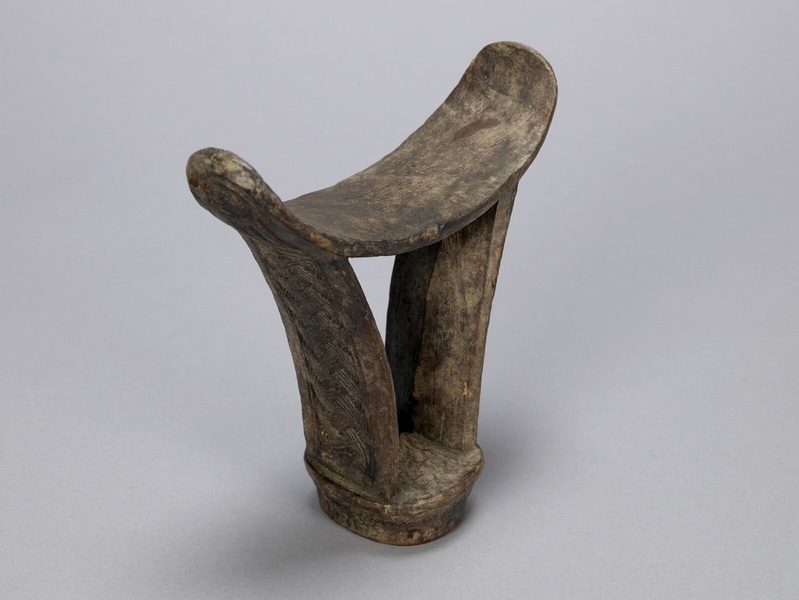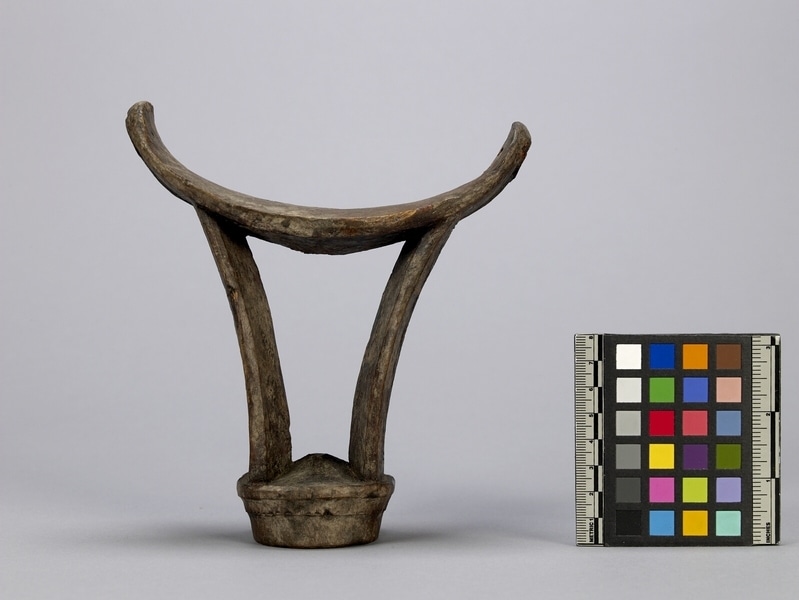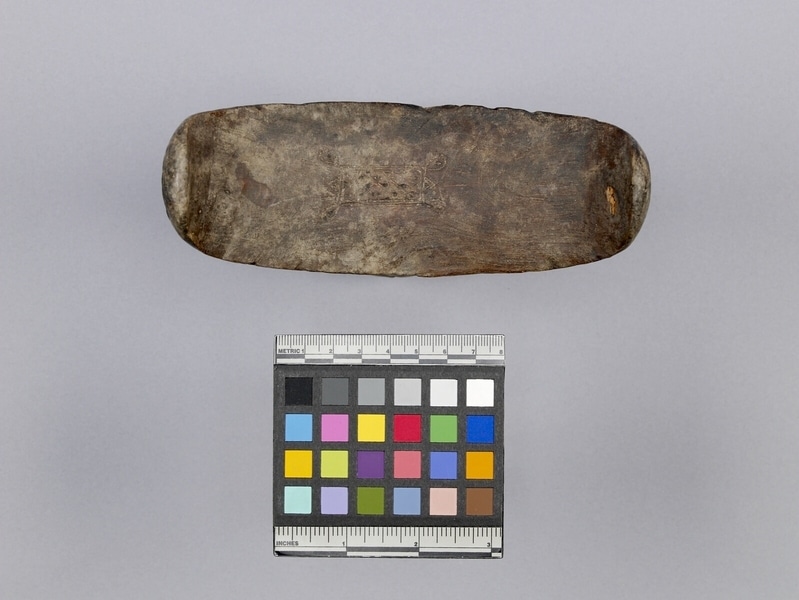Headrest Item Number: Ca70 from the MOA: University of British Columbia



Description
Men's headrest made from light soft wood with a horizontal, concaved curve. Two pieces of wood connect at rest and at the oval shaped, raised base. Base has band of small incised triangles around it. Sides have rectangular vertically placed, incised box with abstract Islamic designs. Neck rest has two motifs; abstract on bottom. Top has incised small rectangular box with diamond design on it. Base has four holes in shape of cross.
History Of Use
Headrests, also called neck rests or bolsters, are used when sleeping or resting; meant to support the head at the junction of the neck and head when lying down. They are carved from a single piece of wood and are also considered symbols of status. Usually a personal object, headrests are portable and may also be used as a stool. They are sometimes used by men to protect elaborate hair arrangements. In some societies, headrests were thought to channel ancestral communications through dreams. In Somali nomad societies, headrests are used in wedding ceremonies. On the wedding night, the groom places the tubash (a sum of money) under the bride’s headrest and the morning after the wedding she uses the money to purchase an amber necklace, which symbolizes her new status.
Iconographic Meaning
Shape of headrest indicates this was used by a man because men's headrests have smaller bases. They are more difficult to sleep on, allowing a herder to take quick action if needed. The patterns on Somali and Boni headrests are believed to reflect Islamic influence in the region. Some scholars interpret the patterns as a "form of shorthand for a prayer", to ensure God's protection of the sleeper.
Item History
- Made in Somalia before 1978
- Collected during 1978
- Owned by Marta Friesen before March 3, 1981
- Received from Marta Friesen (Seller) and Museum of Anthropology Shop Volunteers (Funding source) on March 3, 1981
What
Who
- Culture
- Somali
- Previous Owner
- Marta Friesen
- Received from
- Marta Friesen (Seller) and Museum of Anthropology Shop Volunteers (Funding source)
Where
- Holding Institution
- MOA: University of British Columbia
- Made in
- Somalia
When
- Creation Date
- before 1978
- Collection Date
- during 1978
- Ownership Date
- before March 3, 1981
- Acquisition Date
- on March 3, 1981
Other
- Condition
- good
- Accession Number
- 0705/0028